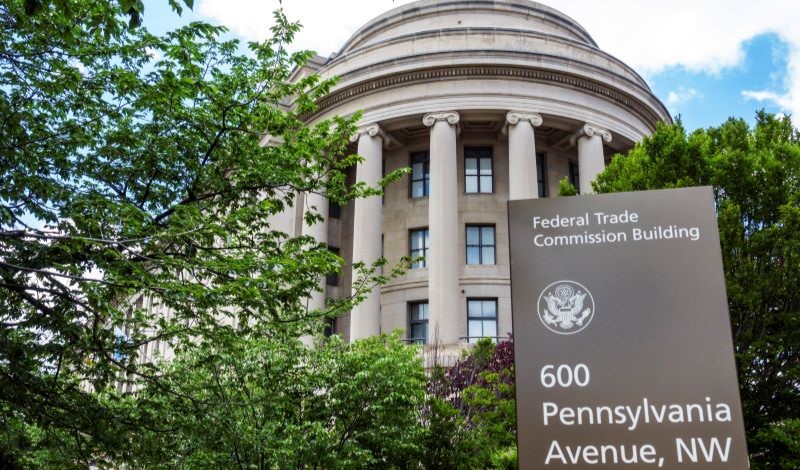
Heads of the Justice Department’s Antitrust Division and FTC should focus on harms to labor in merger review.
Early in the second Trump Administration, the new Republican chair of the Federal Trade Commission (FTC) and then-acting assistant attorney general of the U.S. Department of Justice Antitrust Division, the nation’s two antitrust enforcement agencies, put to rest speculation that either would rescind the 2023 Merger Guidelines released during the Biden Administration. The announcement established the principles that will shape the review of mergers for violations of the antitrust laws during President Donald J. Trump’s second term.
The nonbinding nature of the Guidelines, however, leaves uncertainty about how the two agencies will enforce them. Following the announcement to remain committed to the 2023 Guidelines, FTC Chair Andrew Ferguson announced the creation of a task force to root out practices that harm labor using the antitrust laws, signaling a potential commitment to labor. In a memo detailing the task force, Ferguson highlighted that the antitrust laws are not just designed to protect consumers, but workers too. He emphasized that labor market cartels and “monopsonies”—a term describing employers with monopoly power in a labor market—fall under the FTC’s jurisdiction.
Given the ongoing trend of wage and salary suppression caused in part by anticompetitive practices in the United States, along with the foundation laid by Biden-era antitrust leaders to challenge mergers that hurt workers, the agencies should stay the course and continue prioritizing labor-focused merger enforcement.
The Guidelines describe principles and frameworks that reflect the government’s approach to merger enforcement and inform the public of its priorities. The 2023 iteration introduced several major changes from previous versions, including a new focus on labor.
The 2023 Guidelines explicitly identify, for the first time, that employers are buyers of labor and that harms to workers can occur when a merger involves firms that compete for those workers. Specifically, the Guidelines highlight how “reduction in labor market competition may lower wages or slow wage growth, worsen benefits or working conditions, or result in other degradations of workplace quality.” When firms competing for workers merge, there may be fewer jobs and reduced worker choice, weakening competition for wages, benefits, and other terms of employment.
Labor is particularly susceptible to “high switching costs”—or the tangible and intangible costs of changing jobs—in part because of the particularized preferences of both employers and workers, the Guidelines note. Even if the net number of jobs remains the same post-merger, these unique attributes may still cause harm.
Research supports the conclusion that workers are “severely underpaid in relation to their production,” receiving an average of 65 cents for every dollar of value they create. Price-cost margins—the difference between the price a firm charges for a product and how much it costs to make, which illustrates the competitiveness of markets in the United States—have increased since the 1980s, while wages have decreased. Lax enforcement of the antitrust laws is a major contributor.
It is necessary, then, for the FTC and Justice Department to focus on mergers that impact labor. When the agencies identify a merger that may result in harm to a labor market, they should use their enforcement power, either through suit in a federal district court or through a challenge using the FTC’s administrative process, to block the merger from moving forward.
The agencies can also ensure that antitrust law prevents unreasonable restraints of any kind in output markets. Labor, for the most part, is a variable cost—a cost that changes in proportion to the level of production or sales—particularly at lower levels where it is compensated by hourly wages. An overly aggressive antitrust rule that limits output in a product market can harm workers and consumers.
For example, a product cartel that reduces market output by 20 percent is likely to have a similar impact in the labor market. How much workers lose depends on the number of jobs that are lost and the extent of a company’s market power in the market where it purchases labor.
The antitrust agencies during the previous Administration were successful in challenging mergers that threatened to impact labor. Notable government wins included the merger challenges of Penguin Random House and Simon & Schuster and Kroger and Albertsons.
The 2020 proposed merger of Penguin Random House and Simon & Schuster—two of the largest publishing companies in the United States—created an opportunity for the Justice Department to focus on harm to labor. The Justice Department sued to block the merger, alleging that authors would be substantially harmed if the two firms no longer competed to acquire publishing rights or provide marketing and support services. The Justice Department alleged that advances and other benefits may have also disappeared, given the size of the post-merger firm.
A U.S. federal district court ruled that the merger would likely substantially lessen competition in the market and might decrease author advances, cause less favorable terms, and potentially lead to fewer publications.
Although the merger challenge was not brought under a pure theory of harm to labor since authors are contractors rather than employees, the court’s decision supported the Biden Administration’s focus on workers—and would support a potential push by Trump antitrust enforcers to do the same.
Another case brought during the Biden Administration also supports this trend.
In December 2024, a U.S. district court blocked the merger of Kroger and Albertsons—two of the largest supermarket chains and, at the time the case was filed, the two largest employers of union grocery workers in the United States. Although this challenge was not decided on a labor theory of harm, the court’s opinion noted that “there is no apparent exemption or prohibition against considering the labor theory” and that, in this case, there was “a compelling and logical case for applying traditional antitrust analysis to labor markets.”
A majority of Americans are dissatisfied with their pay and report that it has not kept up with the rising cost of living. If a proposed merger arises that has potential labor market harms, then the Trump Administration should react.





